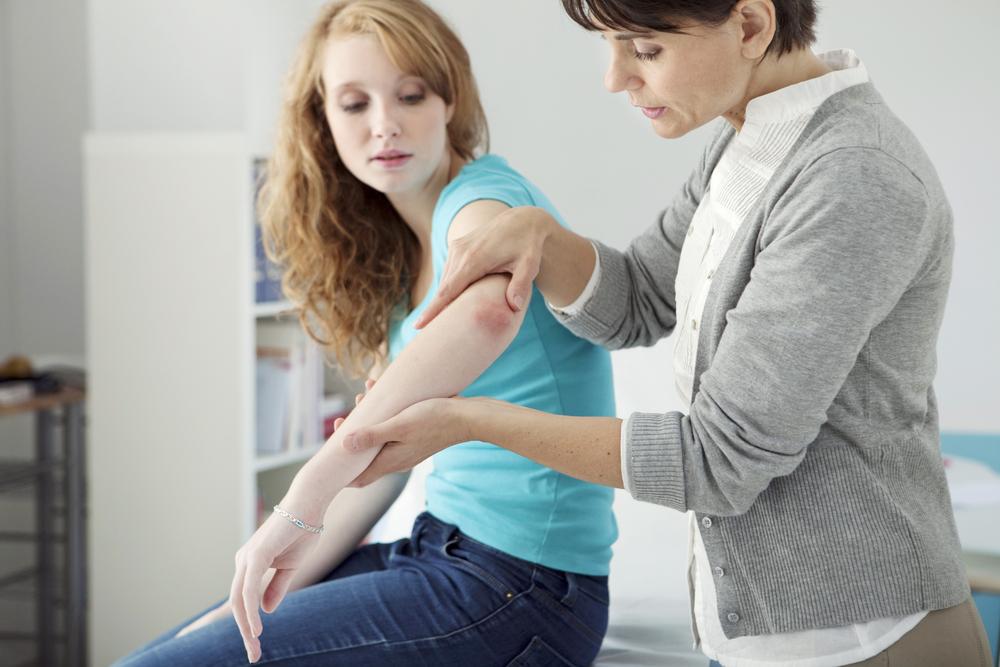Symptoms of Psoriasis
Psoriasis is a chronic skin condition that causes plaques of thickened skin. It is the formation of dry flakes on the skin which is caused due to excessive rapid proliferation of the skin cells. This proliferation is caused due to inflammatory chemicals produced by specialized white blood cells called T-lymphocytes.
Psoriasis usually affects skin around the elbow, knees, and scalp. The severity of psoriasis ranges from mild effects in small areas of the skin to thick inflamed scaly patches of skin formed on the entire surface of the body.

Difference between psoriasis and eczema
Atopic dermatitis or eczema is a skin condition that results in red, inflamed, peeling, cracked, blistered, or pus-filled skin. Psoriasis also causes inflammation of skin, but its long-term effects result in formation of a layer of thick skin which causes intense itching.
Following are different forms of psoriasis and their symptoms-
- Plaque Psoriasis
It is the most common form of psoriasis which results in the formation of plaque on the skin. It appears as red inflamed patches on the skin that have a silvery-white scaly appearance. The area of the skin that usually gets affected with this condition include elbows, skin, scalp, and lower back. - Guttate Psoriasis
This type of psoriasis forms small drop-like spots on the area of the skin. It usually affects children and young adults. A range of conditions that usually trigger this form of psoriasis include upper respiratory infections, tonsillitis, and injury to the skin. Certain medications such as antimalarials and beta blockers can also cause Guttate psoriasis. - Inverse Psoriasis
It forms in the folds on the body like those of underarms, navel, groin, and buttocks. It appears in the form of red lesions that are not scaly but have a smooth and shiny texture. - Pustular Psoriasis
This type of psoriasis forms small pus-like yellowish blisters on the skin. It affects certain areas of the body including hands and feet. This type of skin condition begins with the reddening of skin, followed by pustules and scaling. - Palmoplantar psoriasis
It results in formation of thick patches of scaly and inflamed skin around the palms and soles. - Erythrodermic psoriasis.
When a large part of the skin’s surface gets infected with psoriasis, it is referred to as erythrodermic psoriasis. Patients suffering from this form of psoriasis are at an increased risk of developing heart diseases such as congestive heart failure. Erythrodermic psoriasis results in protein and fluid loss which can lead to severe illness. - Nail and scalp psoriasis
This type of psoriasis results in yellow pitted nails which can be confused with nail fungus. Scalp psoriasis is one of the severe form of psoriasis that results in localized hair loss, severe itching, and dandruff. - Psoriatic arthritis
People with symptoms of arthritis who suffer from inflammation of skin around the areas of joints are said to be suffering from psoriatic arthritis. It most commonly affects people aged between 30 to 50.
There are various forms of treatments available for different types of psoriasis. It is necessary to consult a dermatologist as they will guide you with appropriate treatments based on the type of symptoms.

